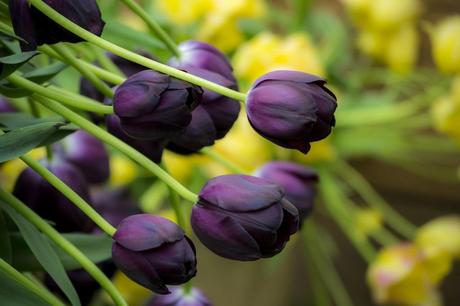Tulips are one of the most popular types of flowers in the world. Much like roses, chrysanthemums and carnations, florists tend to keep tulips in stock as much as possible. That said, unlike other popular flowers, tulips tend to be a bit more delicate. This delicate nature of these flowers should not, however, detour anyone from buying them. Instead, it means that you need to take a bit more special care of these cut flowers to make them last longer.

The first thing that you need to understand is what makes tulips droop and why they begin to droop faster than other types of flowers. Knowing why this happens will help you solve the problem and extend the life of your cut tulips. Consider the structure of the tulip. The flower is rather large and heavy while the stems is not as strong as that of a rose or other flowers. As the tulip grows and blooms, it’s only normal for the soft stem to bend with such a weight pulling it down. Now, after cutting a flower from the parent plant, it might not get its nutrients via the root system but it still absorbs water and nutrients through its stem. Stems are able to absorb a fair amount but they aren’t quite as effective as the plant’s roots. This means that flowers tend to grow faster while still attached to the plant as opposed to after they have been cut.
Many people have come up with several ways of preventing tulips from dropping but they don’t all work. For instance, some people add copper pennies to the water in the hopes that the copper will be released into the vase water and help strengthen the cut flowers and their stems. There is no evidence that this works. Some even like to add chlorine to their vase water. This can help slow down the drooping but it can also bleach the stem and cause the petals to fade. Experts like professional florists advise against piercing the stem just below the flower since they find it does more harm than good. Of course, you can try each of these methods yourself if you are curious.
Now, before you give up, there are some easy tricks that do work. Firstly, when choosing your flowers, make sure that they are still in bud form but have started to open. Tight buds may never open and fully opened flowers will perish in a short period. You will also need to trim the stems. Make sure that you use a very sharp pair of scissors or knife. You don’t want to damage or crush the stems since this will make it difficult for them to absorb water. If you are cutting the flowers from the actual plant, do so just above the node. This will encourage further plant growth and more flowers. Care for your cut tulips just as you would any other fresh flower. Tulips do, however, enjoy fresh cold water rather than warm or room temperature water. Change the vase water regularly, add a flower preservative and keep your tulips out of the wind, sun and away from air conditioners, heaters and fire places.

